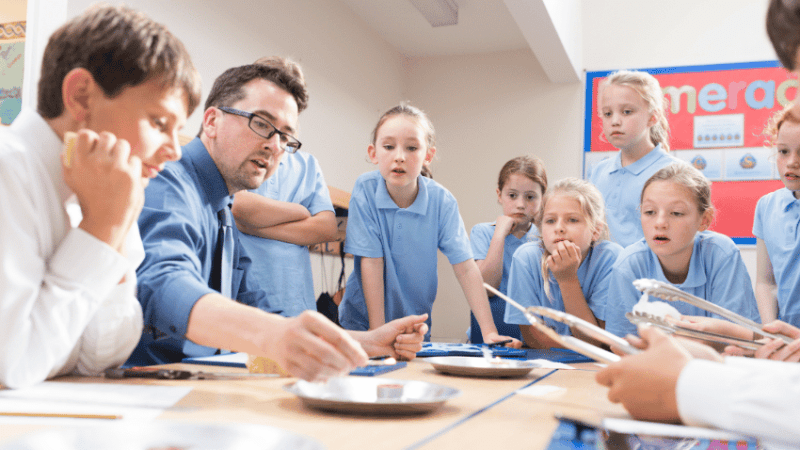Interdepartmental collaboration – Maths and science

Daniel Harvey explains why having maths and science teams in alignment is essential for those students pursuing the highest science grades

- by Daniel Harvey
- Digital learning director, behaviour, pastoral care & school culture lead

Morecambe and Wise. French and Saunders. Taylor and Clough. Or for the more contemporary-minded, Mitchell and Webb. There have been many famous double acts whose complimentary talents and skills made their output far more than the sum of their individual elements.
And in a similar vein, I’d argue that science departments will see the most success when they build their taught curriculum around scientific concepts that rely heavily on mathematical formulas.
Interdepartmental collaboration
Positive outcomes call for teaching based on simple problem steps. This avoids straining cognitive load by building on students’ existing knowledge of maths. We can include topics ranging from forces, electricity and waves, to quantitative chemistry, microscopy and estimation/sampling in this.
Then there are those other tricky-to-navigate areas. This includes the drawing and annotating of graphs, rounding of answers to decimal places or sig figs, and working with standard form maths.
A heightened focus on curriculum development – across both planned and taught curriculums – should see interdepartmental collaboration between your science and maths teams. They should meet regularly to work out the details, language and steps needed to maximise student confidence and success.
We should recognise this as an important part of science curriculum planning. It’s one that hinges on leveraging the existing knowledge and expertise of a school’s maths teaching for its science department.
Cart before horse
I can still recall how, when we introduced a bold new KS3 ‘waves’ topic, the ensuing wave speed equations gave our students plenty of problems to solve. However, problems soon emerged in that our students were unfamiliar with standard form numbers.
This meant we couldn’t use all the prepared problems and work on electromagnetic waves. This was because students weren’t due to be learning about standard form in maths for another couple of months.
I was therefore pleased when a newly arrived science colleague at my school wanted to discuss my approach to teaching maths. (He teaches physics, I teach chemistry).
He told me that he wouldn’t be using triangles to teach the rearranging of formulas. ‘Excellent,’ I thought. It’s such a 90s way of teaching. It fails to help students achieve fluency. This is because they end up having to remember the triangle rather than the formula itself.
My colleague went on to explain that the simplest way of teaching students how to solve physics equations is through substituting values and then slowly resolving the resulting maths sum. This produces a more recognisable maths problem for the students to then solve.
Clarity and consistency
The exchange drove home to me how we shouldn’t leave the way a school’s science team utilises and teaches maths to chance. The very best science teams will instead look to standardise their approach to teaching maths within each science discipline.
Trending
In physics, students will need to practice identifying relevant formula. We need to teach them how to check if they need to convert units before placing numbers into equations for resolution.
With so many non-specialist physics teachers currently teaching physics in combined science GCSE, this clarity and consistency is more important than ever if students are to learn the best methods.
As a chemistry teacher, I’m always struck by how we provide maths students with an equation sheet while chemistry students have to memorise the equations they’ll need.
Recall of those equations is therefore critical. From talking to maths colleagues, I’ve started to incorporate their approach to helping students achieve mathematical fluency in my own teaching.
Collective wisdom
Ultimately, the expertise of experienced chemistry, biology and physics teachers ought to be harnessed and explicitly shared. This is so that every member of the science team can benefit from this collective wisdom.
It should written down, recorded and rehearsed together. This should ideally in concert with the school’s maths team. This way, easy pitfalls (lack of a consistent timeline for key concepts, confusion around certain language and terms) can be avoided.
Maths colleagues can also help their science counterparts by demonstrating how many problems students should be presented with before achieving concept success – and not just as a one-off exercise.
As schools gradually move towards adopting coherent numeracy policies, effective interdepartmental collaborations will be vital in making them work in practice.
Daniel Harvey is a GCSE and A Level science teacher. He is also lead on behaviour, pastoral and school culture at an inner city academy.










